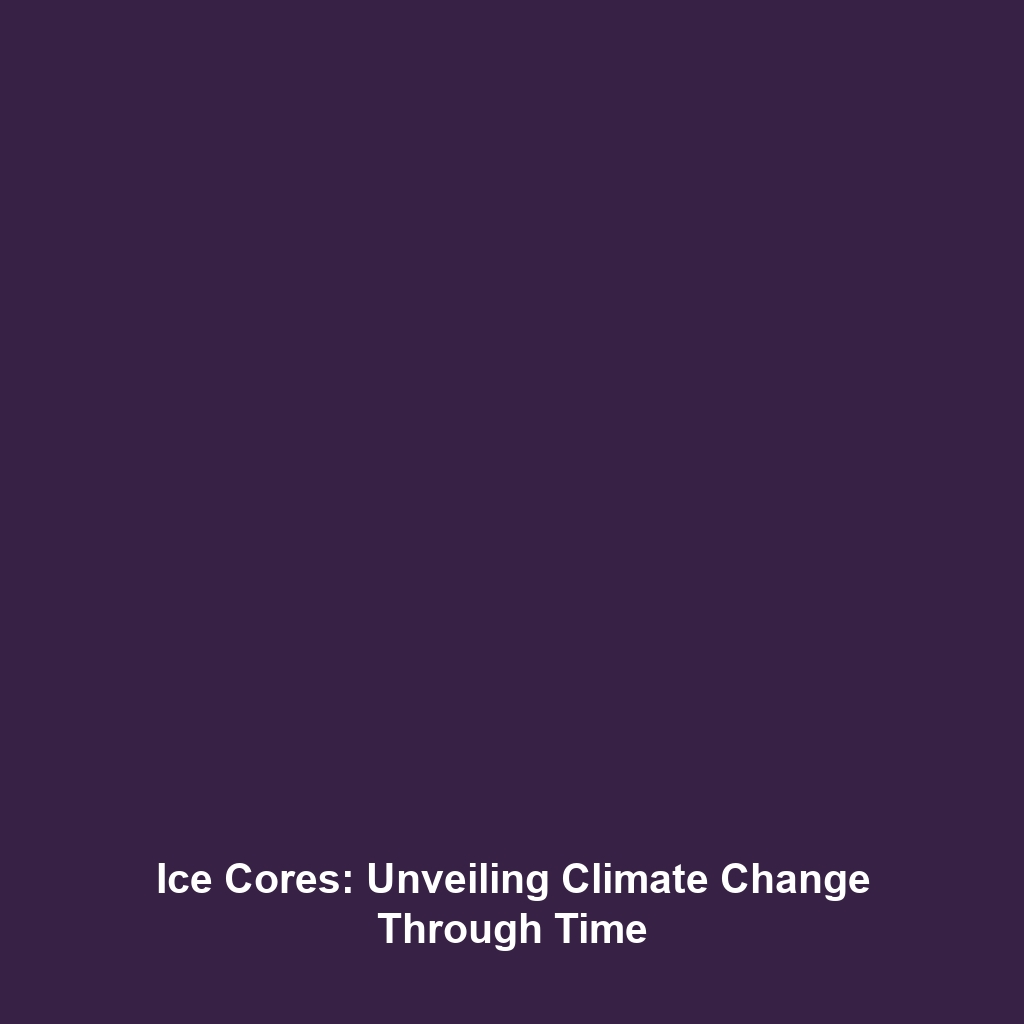Uncovering Climate History: Insights from Ice Cores
Ice cores serve as significant archives of Earth’s climatic past, revealing invaluable data on temperature, greenhouse gas concentrations, and volcanic activity spanning hundreds of thousands of years. These natural time capsules, extracted from polar ice sheets and glaciers, provide critical insights into the planet’s climate history, enabling scientists to understand long-term climate trends and the factors influencing them. This research is vital for comprehending current climate change and informing future predictions.
Key Concepts in Ice Core Research
Ice Core Composition
Ice cores are formed from layers of snow that compact over time, trapping air bubbles that preserve historical atmospheric conditions. By analyzing these bubbles, scientists can reconstruct ancient atmospheric compositions, including:
- Temperature Fluctuations: Each layer of ice corresponds to a specific time period, enabling researchers to infer historical temperatures from the isotopic composition of the ice.
- Greenhouse Gas Levels: Atmospheric gases, such as carbon dioxide (CO2) and methane (CH4), are trapped in ice layers, and their concentrations can be measured to understand their role in climate changes.
- Volcanic Activity: Ash and sulfur deposits within ice cores provide evidence of past volcanic eruptions, allowing scientists to assess their climatic impact.
Applications of Ice Core Analysis in Climate History
The study of ice cores has significant real-world applications, particularly in climate history. Some examples include:
- Determining historical climate patterns that can inform current climate models.
- Assessing the natural variability of greenhouse gas concentrations over millennia.
- Improving understanding of volcanic impacts on climate, which aids in preparedness for future eruptions.
Current Challenges in Ice Core Research
Despite the rich data provided by ice cores, several challenges hinder comprehensive analysis:
- Logistical Constraints: Collecting ice cores often requires expensive and complex expeditions to remote locations.
- Data Interpretation Difficulties: Differentiating between natural climate variability and anthropogenic influences can be complex.
- Preservation Issues: The integrity of ice cores can be compromised if not handled and stored properly.
Future Research and Innovations
Future research on ice cores promises to advance our understanding of climate history significantly. Key innovations include:
- Enhanced analytical techniques for higher-resolution data extraction.
- Collaborations with climate models to integrate ice core findings into predictive analyses.
- Use of remote sensing technologies to better map ice core data and locations.
Conclusion: The Importance of Ice Cores in Climate History
In summary, ice cores are invaluable resources for uncovering past climatic conditions, revealing insights into temperature changes, greenhouse gas levels, and volcanic events that shaped Earth’s climate history. As we face an increasingly uncertain climate future, the lessons drawn from ice core research become more critical than ever. For those interested in further exploring climate history, consider reading about future innovations in climate research or real-world applications of climate data.

